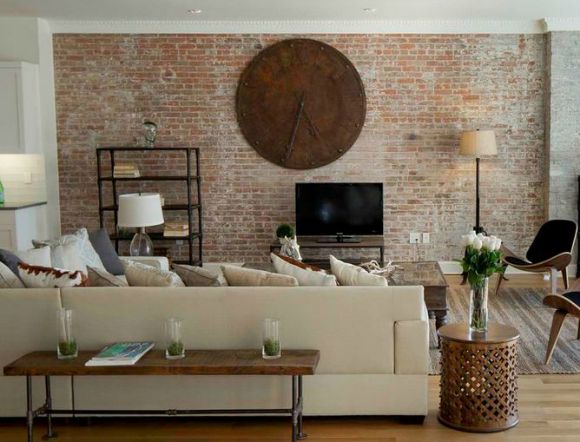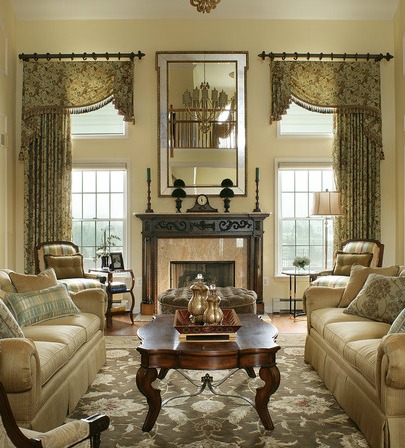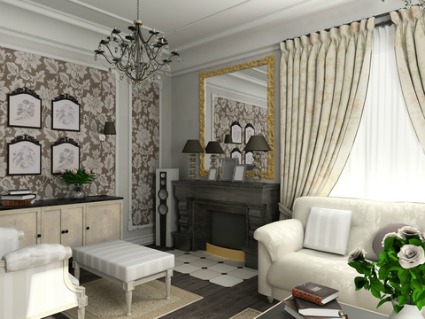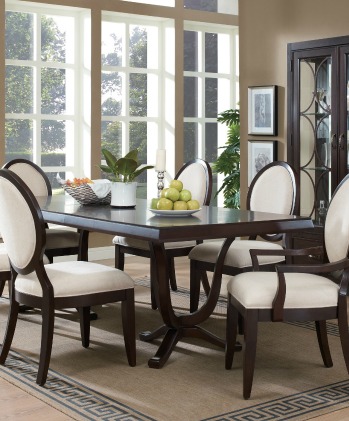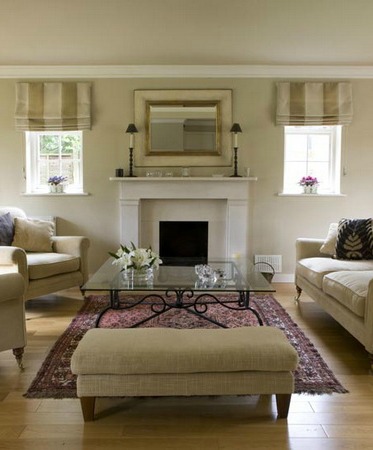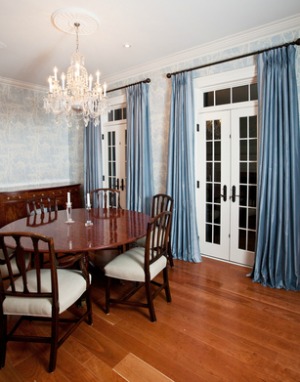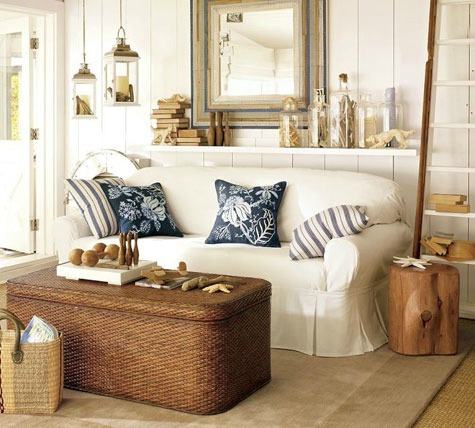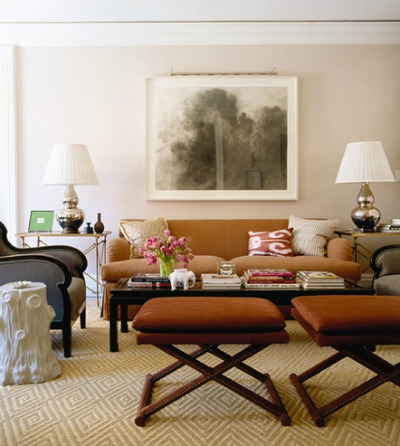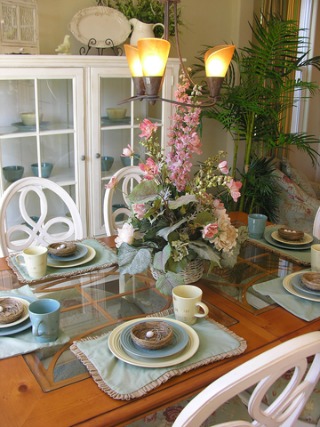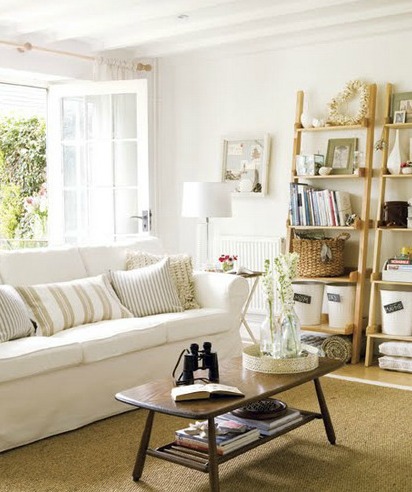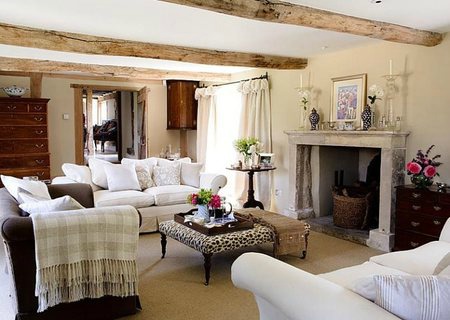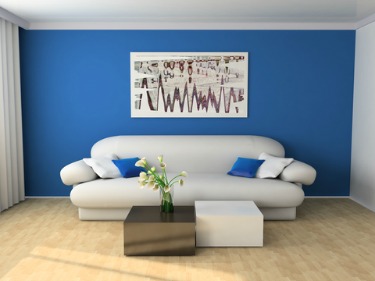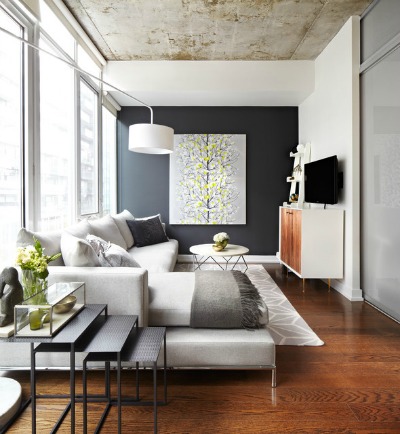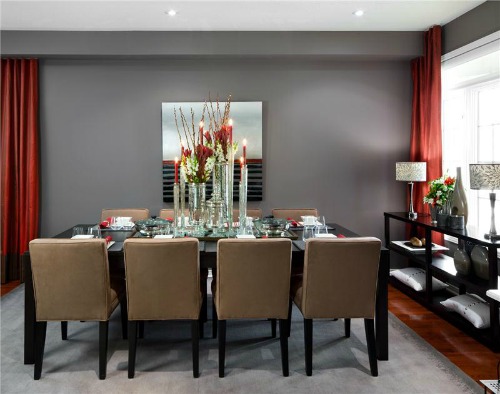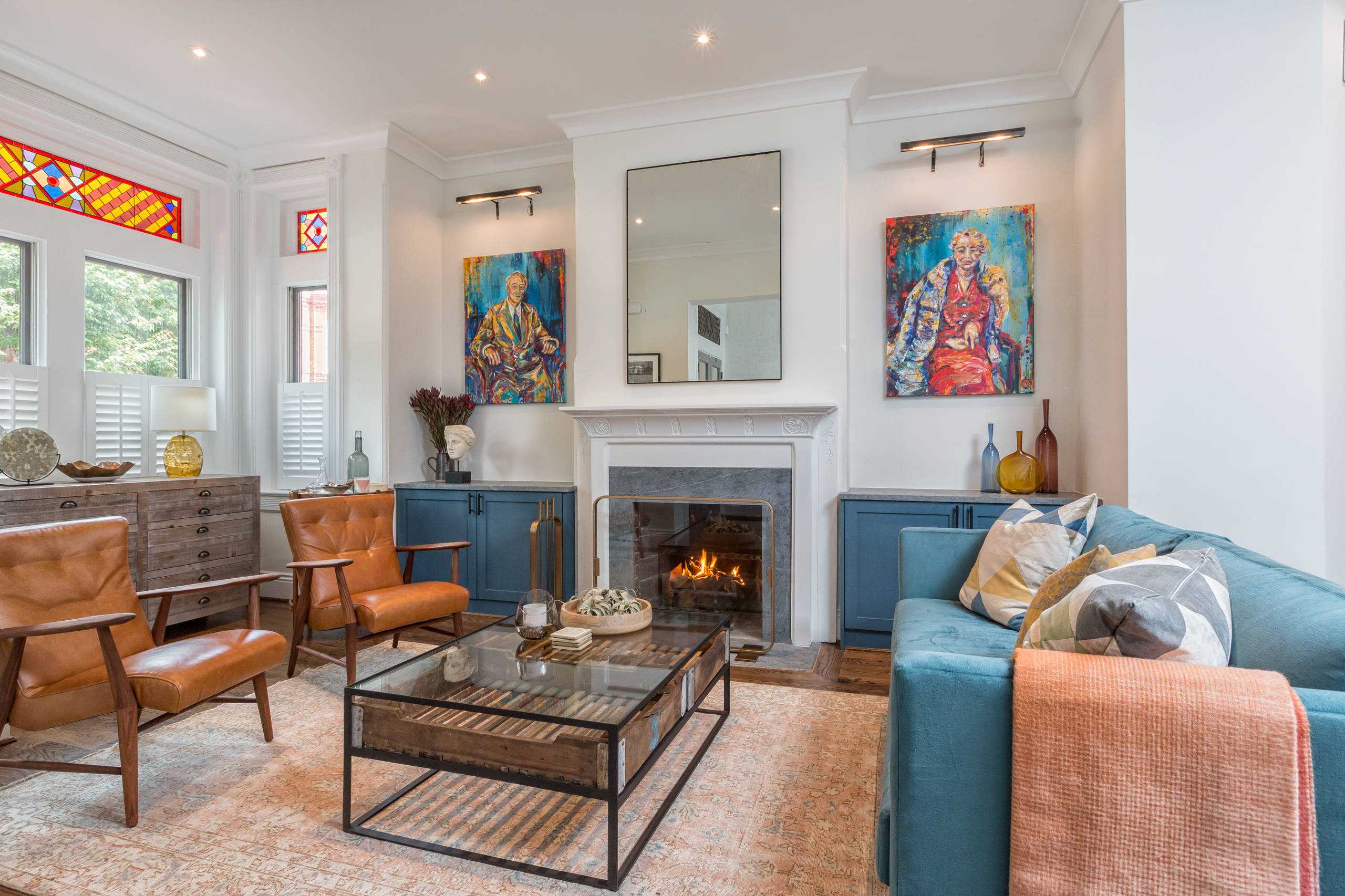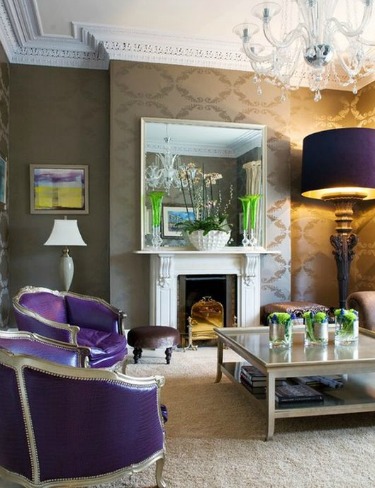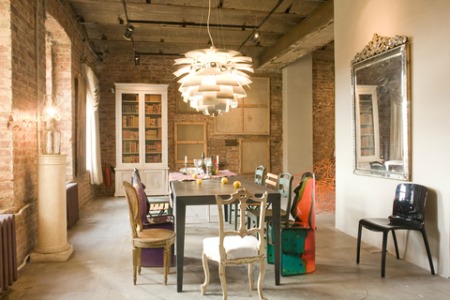What are the Different Room Styles?
For a faster, more profitable home sale
The room styles you choose for your home are a reflection of your taste, lifestyle, and personality. Your personal style can also be influenced by the architecture and design of your home.
Knowing the style of your home is important when deciding to place it on the real estate market. Your house design will guide you in selecting the right color schemes, furniture, window treatments, and accessories.
If you have a house for sale, home staging is all about presenting it to the public at it's best.
For example, if you own a loft-style condo with exposed overhead ducting and brick walls, you wouldn't want to stage your home with lacy window treatments and rose-sprigged wallpaper.
Instead, you might go for a contemporary, casual, or industrial room design, staging with modern furniture, like a leather sofa and glass-topped coffee table.
Mixing in a few antique and rustic pieces will keep it from feeling too cold and austere.
Textural elements, in the form of draperies, pillows, throws, a gently worn Oriental rug and accessories will add warmth and interest, as well.
What are the different room styles?
Formal room design
When people think of the formal style, most imagine stiff, uncomfortable furniture, heavy draperies and stuffy wallpaper. Formal brings to mind grand museum-like residences.
Formal room styles will be luxurious and ornate, with soaring ceilings, and elaborate moldings and architectural features.
The formal room style will give you symmetry, opulent accessories, rich draperies bedecked with fringe and tassels, imported oriental rugs, crystal chandeliers and ornate wall sconces. Period tables may have leather or marble tops.
The traditional formal style was, in fact, designed specifically for royalty, originating from Europe in the 17th and 18th centuries.
Today, many think this opulent style belongs in a museum; but you still find it in historical homes and grand hotels, but rarely in modern homes.
Modern formal style is a "toned-down" version of its more opulent cousin.
If you like order and symmetry, the formal style may be for you. Formal room designs are based on symmetry and vertical lines.
Symmetry consists of matching pairs that are arranged on a straight axis around the room. You may find symmetry in the placement of the windows, furniture, flooring, even artwork and accessories.
In formal room design, there is always a central focal point. It's typically a fireplace, which may be placed in the middle of the longest wall. A window with a lovely view, a large piece of furniture, or even an outstanding piece of artwork may serve as focal points.
Vertical lines create an orderly mood; high ceilings and tall windows work well with formal room styles.
Furniture: Formal room designs are typically furnished with dark polished wood furniture, like walnut and mahogany, with often a few fragile antiques mixed in. Furniture is elegant with curving lines.
Upholstered furniture might be dressed in smooth fabrics, like a damask or satin, with chair legs left bare.
Architecture: High ceilings, a fireplace, tall windows, beautiful ceiling details, intricate molding.
Formal room styles are often accessorized with crystal chandeliers, elegant wallpaper, large mirrors and original paintings in heavy, gilded frames and highly polished brass window and door hardware.
Done incorrectly, formal rooms can feel stiff, cold, and unwelcoming. (Hands off!) Done properly, this style can be elegant, warm, even cozy as in the picture above.
Formal contemporary room design
The formal contemporary room style is a modern version of the old stuffy museum-like look.
In contemporary home decor, you will find a sleeker look with straight lines rather than curved, ornate ones.
Furniture wood color is often lighter, and you may find a mix of other materials, like; glass, leather, metal, with more rustic elements like stone mixed in.
Furniture fabrics are less formal and fragile, with varying textures in solid colors or bold patterns.
You might also see this room styled in a monochromatic color scheme, as in the picture on the right.
Traditional room design
If you love old houses with crown molding, wainscoting, neoclassical cornices and wood floors, you may prefer the traditional style.
Like the formal look, the traditional look is based on symmetry and vertical lines— there is a sense of order.
Most people are familiar with the traditional look. It’s a “toned-down” version of the formal style-- often seen in our parent’s or grandparent’s homes. It's the formal look, just more relaxed and comfortable.
Traditional room styles can range from being elegantly formal to cheerfully lighthearted.
Color schemes: Traditional room color schemes are generally warm; sage greens, olives, deep reds, or neutrals like khakis, creams and tans. Traditionalists may prefer bolder colors like robin’s egg blue or bright yellow and gold.
Furniture: In this room style, you often find matching sets of furniture and accessories, or mixed period furniture of 18th and 19th century antiques (or reproductions) that lend a more classic look. Pillows and upholstered furniture might also be embellished with tassels, fringe and braids.
Fabrics: Country fabrics may have striped, checked, floral or damask patterns.
Window treatments: Window treatments may be ornate and dramatic, such as ceiling to floor draperies crowned with a valance or fabric-covered cornice.
Traditional window treatments are often bedecked with all the “bells and whistles”—shirred valances, tassels, jabots, braided cords, fringe and even shutters.
The traditional look is often accessorized with antique Oriental rugs, classic French designs, or carpeting influenced by early American colonial times or the Victorian period. You may find collectibles scattered throughout a room.
Wallpaper is often a feature in traditional room designs. You might find Oriental themes, stripes or florals. Walls might be treated with a glazed or sponge-painted effect to "age" a room.
Casual room design
The casual style is comfortable, warm and inviting. Casual design could be featured in almost any style of home. It will work in a Cape Cod style home, a log house, even in a high-rise apartment.
When I think of the casual style, I think of Pottery Barn! This is my absolute favorite home decor style.
You won’t find stiff, fragile furniture, fussy window treatments, bright colors and groupings of dust-magnet collectibles. The general attitude of this room style is to “kick back and relax.”
Asymmetrical design is preferred over symmetrical patterns, as it lends a more casual and relaxed ambience. Horizontal lines are favored over vertical.
Color schemes: Preferred colors are typically neutrals, featuring creamy whites, tans and earth tones like sage greens, pale yellows and blues.
Furniture: Casual furniture may be large, overstuffed and functional; the kind of furniture you want to plop down in with a good book!
You may find an eclectic grouping of furniture in the casual style; rustic antiques, wicker, a farm table, modern laminates, glass table tops, and so on.
Fabrics: “Casual” people are generally concerned about ease-of-care and durability. Natural fabrics, like cotton or wool are preferred by some; others will select more forgiving fabrics, like chenille or micro-suede.
Fabric has a big role in this style in the form of; antique quilts, textured fabrics, plaids, ticking stripes; nothing too ornate in pattern. Upholstered furniture may be covered in crisp white or light neutral colored slip-covers.
Architectural features: Architectural features may include wood panels, built-in bookcases, a fireplace, large windows that allow for lots of natural light, or exposed beams.
Flooring may be a warm wood or slate, tile or stone.
Window treatments: Window treatments for casual room styles are often designed to encourage natural light. You may find pleated shades, shutters, window blinds, or simply no window treatments at all.
Accessories will be pared down to go along with the room's casual, no-fuss attitude. Vignette designs will be composed of objects from nature like twigs, bird nests, seashells, etc.
Country room design
Like the casual style, country can be cozy, warm and inviting. Country room styles are a favorite among many, perhaps because it takes us back to a simpler time.
The country design style has been around for centuries in many different forms. English country, Tuscan and French country, and most recently, American country. There are also regional differences within each country, like New England Colonial or American Southwest, for instance.
Ask people to interpret the country look, and they might give you a description of; dried herbs hanging from the ceiling, antique furniture, an overpowering duck or chicken motif or fussy lace curtains. The truth is, some people do get a little carried away.
By combining the country look with today’s contemporary and casual air, the result can be quite charming.
The country look is replete with objects from nature. Here you will find a wonderful variety of natural materials such as; weathered barn siding, iron bedsteads, twigs, wicker, clay pots and crocks, brick, copper, and more.
Color schemes: Color schemes for the country style are typically warm, soft and cheerful; sunny earth tones, like yellows, blues, greens, browns, and reds. You may also see pale pastels, (even pink!) a soft buttermilk hue is a standard favorite.
In a modern country home, you may see walls painted in a crisp white, cream or ivory, or all the trim painted in white.
Fabrics: Favored fabric patterns are checks, ticking stripes, paisleys, plaid, English florals, calico, gingham, toile, chintz, and fabrics with a hand-loomed look. Antique quilts, samplers, linens and rag rugs also play a big role in country room designs.
Furnishings: Furnishings may consist of family heirlooms or vintage pieces gleaned from flea-markets and antique stores—anything that shows years of wear.
Handcrafted antique furniture is a favorite among country aficionados. Windsor and ladder back chairs are widely recognized as belonging to country. Wood furnishings are often painted in green, white or blue.
Furniture slipcovers are often used to unify mismatched furniture. My favorite of all country furniture pieces is the big pine farm table, or harvest table.
Flooring: Covering the floor in a country home; wide wood planks or stone, like flagstone. Every country home may have an assortment of area rugs, like handmade hooked, flat-weave or braided rugs, stenciled floor cloth or folk dhurrie rugs.
Collectibles play a big role in country decorating. Accessories often used in the country look are baskets, folk art, old kitchenware, farm equipment and tools, antique toys, weather vanes, dried flowers, old duck decoys, mason jars, and more.
Architectural features: Architectural details often found in country room styles are; exposed beams, a fireplace, brick walls or fireplace, paneling or breadboard, gabled roofs, dormer windows, a big front porch with a swing, lap siding and shutters on the windows.
Contemporary room design
Contemporary room design can be somewhat eccentric, yet coolly sophisticated. Today's contemporary design doesn't have to be austere and stark, as in days past. It is still sophisticated, but more livable.
Personally, I am uncomfortable with contemporary room design, concerned that I will disrupt the harmony of a room by setting a wine glass or magazine on a coffee table!
Contemporary room styles are concerned about shape and form, clean lines, simplicity and open spaces. There is a particular sparseness, a lack of clutter in contemporary design.
As a rule, symmetrical balance is generally not seen in this style— lines follow a horizontal-vertical format. You will find curves mixed in with the angles and hard edges to soften the look and create flow and rhythm.
Contemporary design is often mixed with other styles to create an eclectic look. You may see cutting-edge design and pop art serving as a bold focal point on a wall. Accent pieces are straight forward and simple.
Contemporary design is typically done in understated neutral tones, as in a monochromatic color scheme; neutrals, like black and white together, or gray, white, beige, brown or black.
Color schemes: A bold bright color is not uncommon among a neutral color scheme to add a bit of contrast and excitement to a room. Red and purple or orange and red are often used together. Some interior designers will tell you not to worry about matching colors perfectly in a contemporary space.
You may see a brightly painted focal wall or a wall done all in black. Perhaps a bold-colored sofa will be the focal point of a room. For good balance and flow, this color will be repeated in different shades and textures around the room, perhaps with pillows, throws, artwork or area rugs.
Furniture: Furniture can be large in size and bold enough to stand alone. It may be smooth and sleek and comprised of various materials like, glass, lucite, metal, stone or smooth natural woods.
Geometric shapes like; round or square tables, rectangular sofas, round coffee table or ottomans are often featured in contemporary room designs.
You will not see traditional furniture with decorative embellishments in this style. Often, furnishings become the focal point in contemporary design.
Fabrics: Fabrics will not have busy patterns, because that would conflict with the clean, fresh look of contemporary design.
Texture is often created by using silk, wool, linen or crushed velvet fabrics. The use of fabrics in draperies and accessories also helps to offset the angles and hard edges of a room.
Finishes: Metals still have a place of prominence in modern contemporary design. Stainless steel, chrome and nickel add to that sleek and clean look desired by many. You will find metals used in the kitchen and bathroom fixtures, furniture, shelving, lighting fixture, artwork frames, and lamps.
Done correctly, the contemporary style bold and impressive. Done incorrectly, the contemporary style can be austere, cold and unwelcoming.
Eclectic room design
Eclectic design appeals to collectors, travelers and adventurous people who may not like to follow trends.
You will typically find an offbeat mix of room styles from two or more different countries and/or periods represented in one room.
Mixing different styles and eras is a tricky business. When done well the result can be harmonious and pleasing to the eye. When done incorrectly, the pieces in a room may clash and the result can seem jarring.
In the eclectic decor, look for odd pairings of non-matching furniture and accessories. For instance, a classic French sofa, an antique Persian rug, modern art and contemporary mini blinds can all work successfully in one room.
In eclectic design, you can expect an element of surprise, something unexpected, yet complementary to a room. Eclectic room designs are united through the use of color, form, mass, texture, shape and finish.
Color schemes: Using neutral colors in eclectic room styles helps to ground the palette and unite mismatched furnishings and accents. Add the accent colors and repeat these colors though out the room for balance and flow. Color should be a unifying factor in this design style.
Furniture: Allow color, pattern, or mood to unite disparate furnishing and accents; for example, upholster antique furniture with fresh contemporary fabrics, or soften a modern sofa with old linen pillows. Furniture should be balanced and in scale to one another.
Finishes: This is the one design style where it's okay to mix finishes. Go ahead and hang that gold framed picture in the same room with contemporary chairs with stainless steel legs. The trick is, to keep each piece appropriate to the overall mood you're trying to achieve.
Browsing through interior design magazines will help you develop an eye for what works well together. Find pictures of rooms you like, study and dissect them.
Is it the color combinations that make the room work? What feature stands out to you? How is it possible for a contemporary leather chair to coexist with traditional upholstered furniture? What do they have in common?
You should also consider the type of mood you are trying to create-- are you attempting a formal or informal room?
Recognizing the “mood” of separate furniture pieces should guide you in putting furniture together in a room. (Mood; formal, informal, traditional, casual, playful, etc.)
Of all the room styles, the eclectic look is most difficult to achieve successfully, because of all the different interior decorating styles involved. Done successfully, the result can be playful and fun, a look that is uniquely yours.
Return from what are the different room styles to home page
